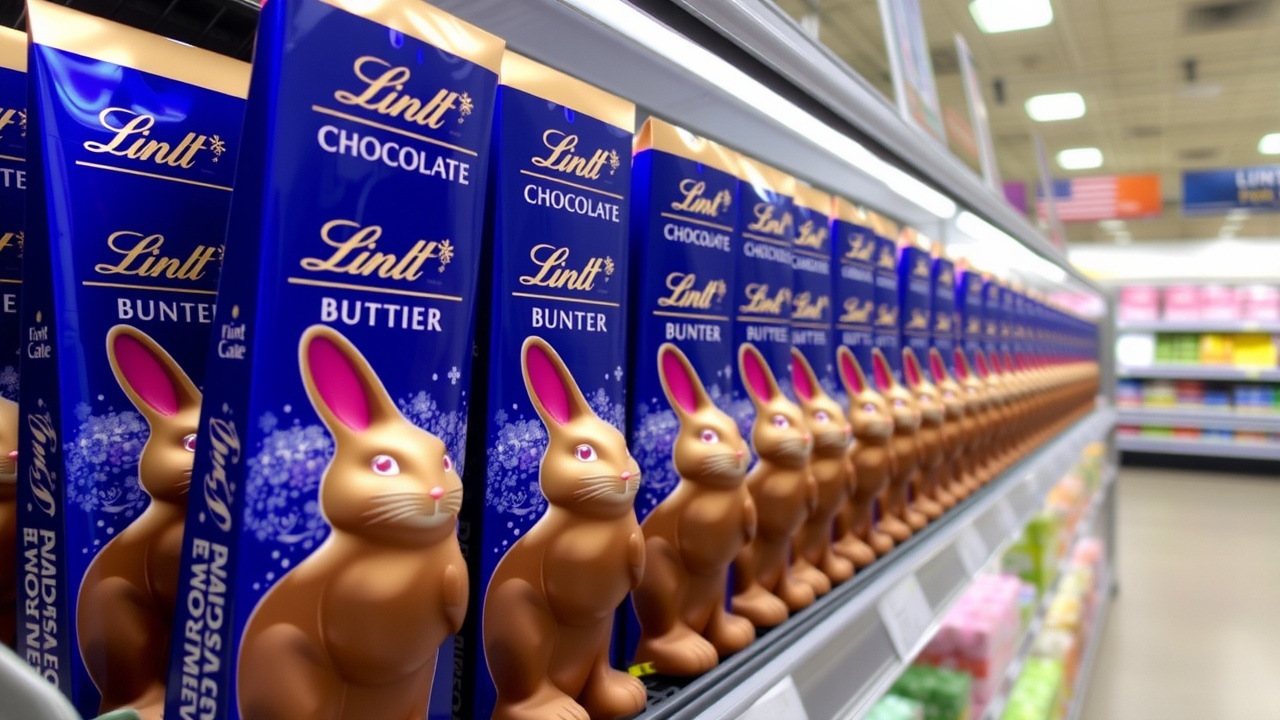
Trump's tariffs combined with high cocoa prices may leave chocolate manufacturers with a bad taste this Easter
Is it wise to give chocolate stocks a break or are they a solid investment option for your portfolio?
Despite a considerable decline from their peak in late 2024, cocoa prices are still far higher than their long-term average. Trump's tariffs and this could leave chocolate manufacturers with a bad taste in their mouths this Easter.
Poor West African harvests have contributed to higher prices, which as of April 16 are still above £8,000 per metric ton for cocoa futures. The region provides about 70% of the world's cocoa supply.
The chocolate manufacturer Hershey stated during its February earnings call that it anticipates pressure on earnings in 2025 due to cocoa prices. Similar to this, Mondelz stated that it anticipates "unprecedented cocoa cost inflation" to cause adjusted earnings per share to decline by 10%.
"In order to sustain profitability, manufacturers are lowering product sizes, increasing prices, and investigating substitute ingredients," stated Lale Akoner, eToro's global market analyst.
But there are risks associated with this. Reducing the size of bars and altering well-liked recipes may cause customer backlash. Recently, Cadbury came under fire for cutting the number of Twirls in a multipack from ten to nine.
The alternative is to raise prices, but they can only go so far because consumers are still feeling the effects of a high inflationary period. Chocolate manufacturers are now in a difficult position as a result.
Trump's tariffs may increase the cost of chocolate.
The broad tariffs imposed by Donald Trump may cause cocoa prices to rise even more, raising the cost of chocolate.
The US president declared a 21 percent duty on imports from Ivory Coast, the world's largest cocoa producer, as part of his "Liberation Day" tariffs. Now, a 10% "baseline" tariff is being applied in its place, and this has been put on hold for ninety days. A ten percent tariff is imposed on Ghana, another significant cocoa producer.
"These tariffs could result in higher consumer prices and strained supply chains by raising production costs for American chocolate companies," Akoner stated.
If retaliatory actions are taken, the problem might worsen. In response, Kobenan Kouassi Adjoumani, the agricultural minister of Ivory Coast, threatened to "increase the price of cocoa."
Even though the world market determines cocoa prices, the nation could increase cocoa export taxes to increase revenue. This will "worsen cost pressures for chocolate producers and consumers alike," according to Akoner.
Is buying chocolate stocks a good idea?
Naturally, the tariff issue is not unique to chocolate companies, but the cocoa issue is. It will be difficult for investors to locate many businesses that are unaffected. Finding those who are more equipped to withstand the storm is more important.
Chocolate manufacturers may be more resistant to tariffs than other market segments because their products are staples for consumers. The stock prices of Hershey's and Mondelz have both performed admirably in the face of recent volatility.
Since Trump's tariff announcement on April 2, Hershey's has increased by 0.2 percent as of the close of business on April 16. Mondelz has increased by 0.5 percent. Both have performed better than the consumer staples sector of the S&P 500, which has lost 1 point1 percent during the same time frame.
There are four major companies that investors who wish to gain some exposure to the chocolate industry can think about: Hershey, Nestl, Lindt, and Sprngli. Some well-known brands, such as Mars, are privately held. Meanwhile, Mondelz is the owner of Cadbury.
Using trailing price-to-earnings (P/E) ratios, Hershey is the least expensive of the four. Yahoo Finance data indicates that it is trading at about 15 times earnings. Nestl and Mondelz are nearer 20, but Lindt is trading at about 40 times earnings.
However, it is important to note that each company has a very distinct business model. We examine each of the four in greater detail.
Hershey.
The most recent financial report from Hershey's shows that 16 of its 20 manufacturing and distribution facilities are located in the United States. As a result, tariffs won't have a significant impact on its final goods, which are primarily produced and sold in the US. The cost of the supply chain, with taxes imposed on ingredients like cocoa, is probably the biggest obstacle.
Since more than 90% of Hershey's sales originate in North America, the company may be vulnerable if the US economy suffers as a result of the disruption caused by the tariff, as consumers may reduce their spending.
Observe every market using TradingView.
A Mondelz.
Despite being an American corporation, Mondelz has a global presence and only generates 26% of its revenue in the US. Additionally, its manufacturing base is dispersed globally. Out of the 147 manufacturing facilities owned by the company, only 21 are located in the United States.
Similar to Hershey, domestically produced finished goods won't be subject to tariffs, but imported ingredients like cocoa will.
Compared to Hershey, Mondelz is a much more varied company in terms of both its product line and worldwide sales presence. Chocolate accounts for only 31% of Mondelz's total sales. Other products like biscuits, baked snacks, candies, and beverages provide the remaining portion.
Use TradingView to keep tabs on every market.
Nestle.
Nestl, a Swiss company, may also appeal to investors seeking a more diversified candidate. Instead of being considered a chocolatier, it should be seen as a fast-moving consumer goods company. In total, it owns over 2,000 brands of pet food, coffee, and cereal.
Nestl serves a worldwide market, just like Mondelz. The US is Nestl's largest market, accounting for 32% of sales last year, but the company makes about 90% of its products locally. This might make it more resilient to the tariff storm.
"We are in a unique, privileged position," Charlotte Freixe, the CEO, told reporters during the February Nestls earnings call. "Our strategy has always been to produce where we sell."
Of course, some ingredients, like cocoa, must be imported from abroad and may be subject to tariffs, but the company's sales of confections only make up about 9% of its total revenue.
Keep tabs on every market with TradingView.
Lindt and Sprngli.
The Swiss business Lindt and Sprngli is less diversified than Nestl and Mondelz because it specializes in chocolate.
Despite the fact that the US accounts for approximately 39% of the company's sales, CEO Adalbert Lechner believes the impact of the tariff will be "relatively limited" for similar reasons to those of Nestl. During an interview with CNBC, he noted that approximately 95% of the company's US produce is produced in the United States.
Keep tabs on every market with TradingView.














Leave a comment on: This Easter, should you buy chocolate stocks?